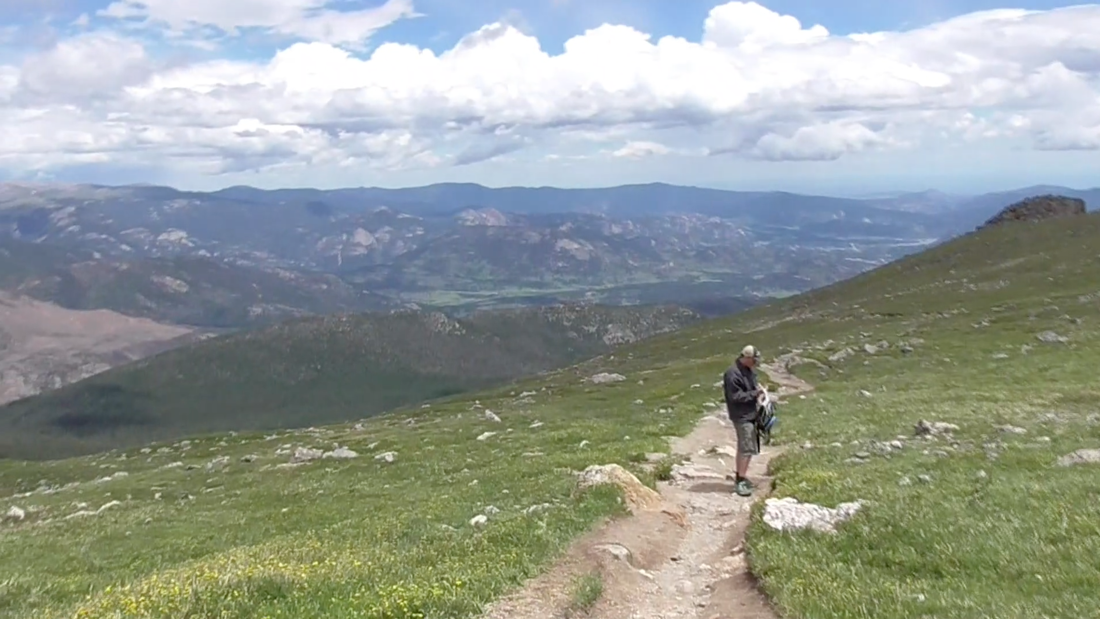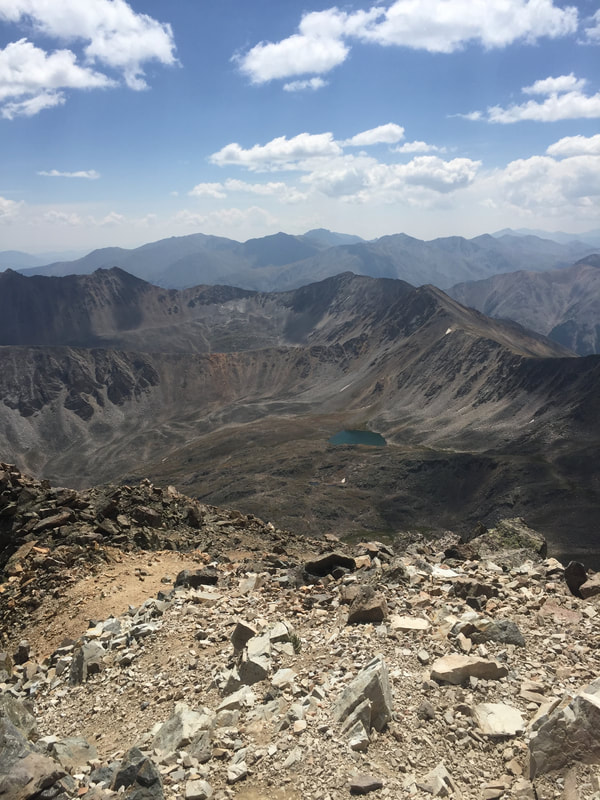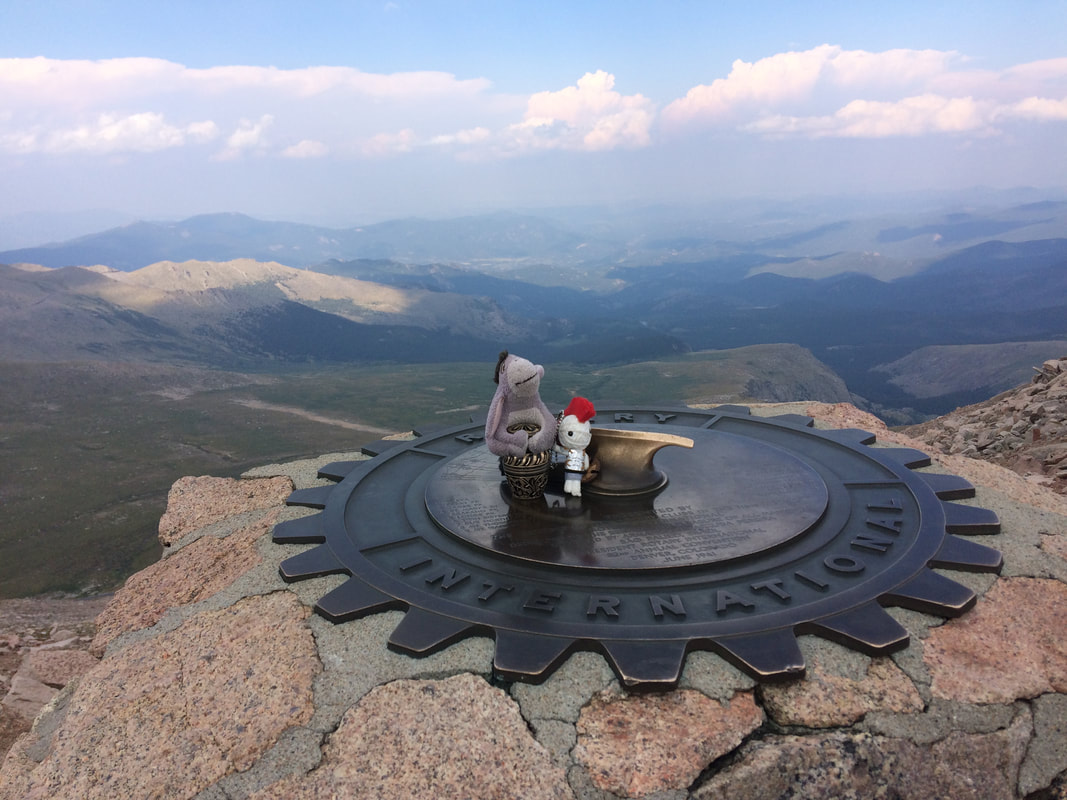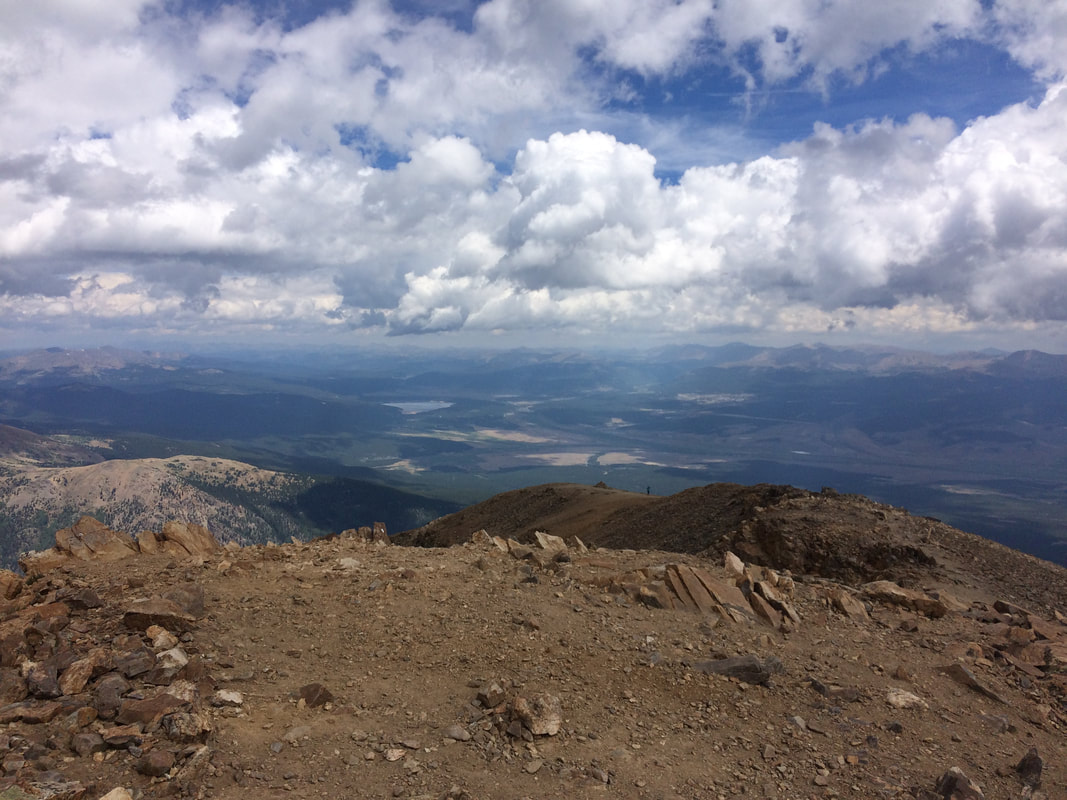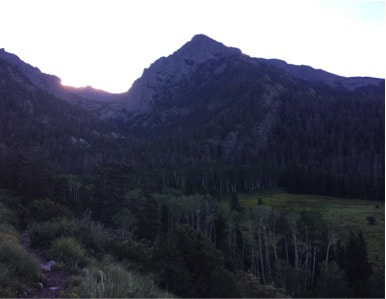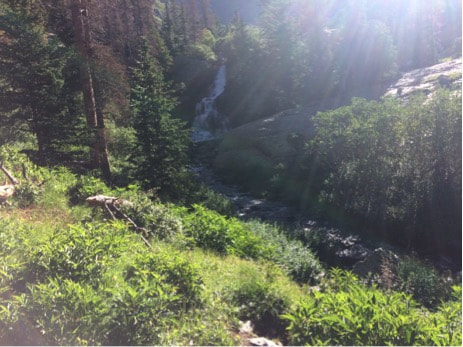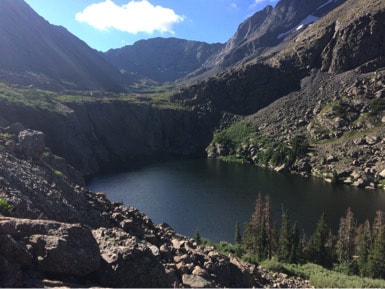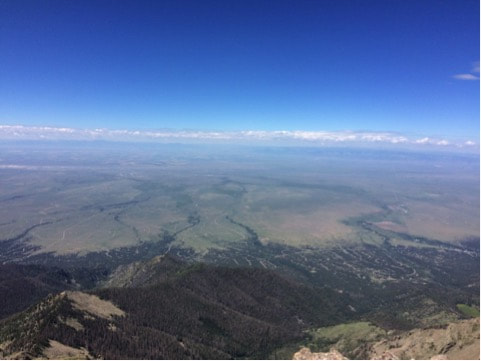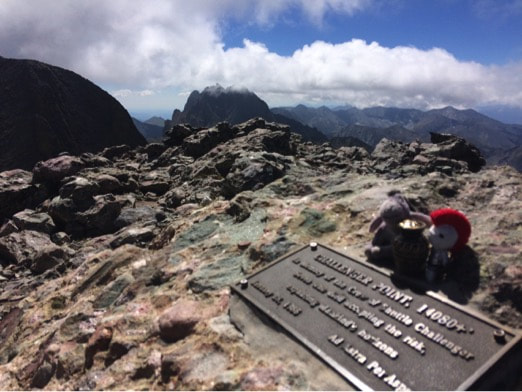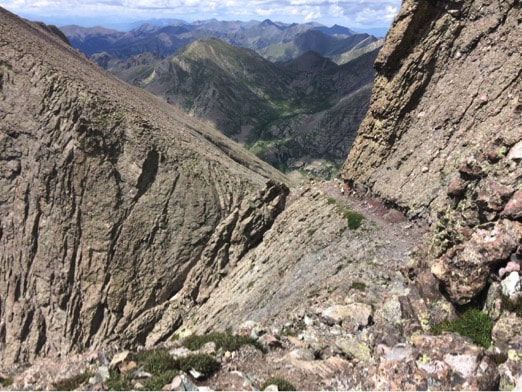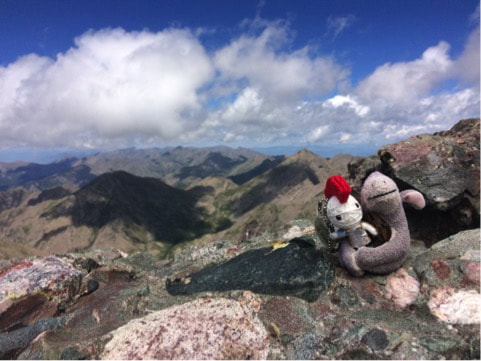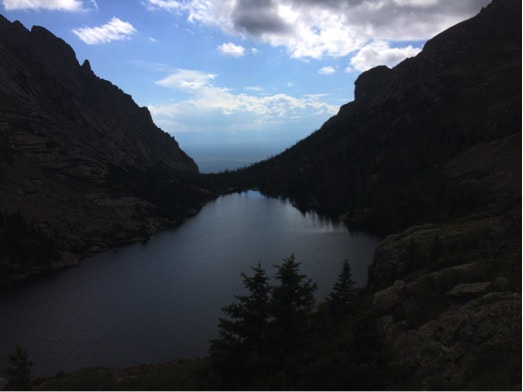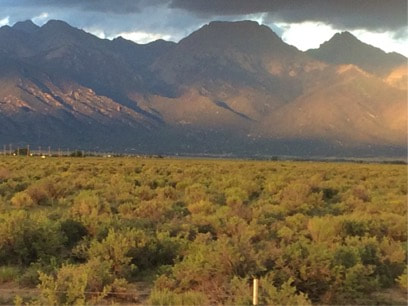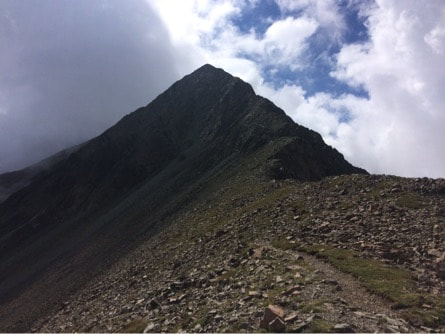|
Taylor Dunn is the pen name of an American born author raised in the charming and underrated city of Minneapolis, Minnesota. There, a poor white kid growing up in a poor black neighborhood, he learned many of life’s lessons the hard way. Drawing on those experiences has led to the creation of unusual characters with, demented and deranged as they may be, a distinct voice.
Escaping the poverty of the North Side neighborhood, he attended Augsburg College and later Saint Cloud State University where he studied history, with a particular interest in Eastern Europe and Asia, discovering how poor people of other cultures were also crushed by structural inequality and oppression. Before publishing his first novel Taylor worked as a yard-dog for a company known affectionally by its employees as the dog-nut. He moved on to stints as a courier, truck driver, bartender, a teacher of little kids, and later a teacher of bigger little kids. When not being tormented by the scheming intrigues of demons, Taylor enjoys traveling, mountaineering, and the unpredictability of people. |
Notes from the peaks, hastily written and poorly maintained
I have always had a place in my heart for the mountains. Any mountains, anywhere. As a kid I hiked Colorado
with my dad, and those memories stayed with me after his passing. In the fall of each year I pack up the gear
and hit the road for adventure, inspiration and all too often, pain. Yes, there is a price the feet must pay
for such things. The following is a log of one climber's experiences in the high places he has seen.
with my dad, and those memories stayed with me after his passing. In the fall of each year I pack up the gear
and hit the road for adventure, inspiration and all too often, pain. Yes, there is a price the feet must pay
for such things. The following is a log of one climber's experiences in the high places he has seen.
|
August 10
The best day of the vacation was the last peak we climbed: La Plata peak. The trail began at a parking area just off a paved road and wound through a forest of mostly pine. As the trail ascended it followed a swift mountain stream until rising steeply above the tree line. It was the perfect kind of trail, some vertical stretches followed by flat. Upon leaving the tree line the sun came out and we abandoned the coats, and soon met up with a couple of other people hiking the trail, both stoners who I smelled long before I saw them. This is not unusual on popular hikes in Colorado, where weed is legal. Without much drama we reached the summit, and I ended up having a great conversation with said stoners about the various hikes in Colorado. It never surprises me how many different kinds of people you discover while mountaineering, and almost all of them are friendly and kind. Perhaps the fact that summiting mountains is inherently dangerous forces people to understand that we need each other, or perhaps knowing that if you get into trouble these are the most likely sources of help. Or maybe it's the weed. Whatever the reason, the people are one of my favorite things in climbing. The views were spectacular and the day was perfect. We stayed on the peak for almost an hour, and would have loved to stay longer. If every hike was like this one, I would probably abandon everything and move to the mountains permanently. |
|
August 7
Yesterday my truck exploded. Almost literally. We were relaxing after our first summit and taking in some of the sights when the back end of my 4x4 started making this horrible noise. It was as if the whole system was on the verge of collapsing, and so we limped to a mechanic in the small town of Silverthorne, Co. We rented a car so that we could still enjoy the vacation, but when the mechanic called to tell us what was wrong I heard the last thing I wanted hear: 'catastrophic damage'. The truck would need a completely new back end, which forced us to change plans and go after summits that did not require 4-wheel drive to reach the trailhead. I settled on Mt Bierstadt and Mount Evans, both outside of Denver, and both mountains I have climbed before. I didn't mind. They are great summits and the weather was beautiful. The interesting part of Evans is that one can reach the peak by car as well as by climb. There is an observatory near the peak and also this cool compass, which identifies landmarks in the surrounding area. It's interesting to see the climbers and the drivers intermixing on the peak. It makes a guy wonder how much jealously exists between them. All in all, a satisfying end to an anxious day. |
|
August 5
For this campaign I brought along my daughter, an experienced climber in her own right, who had summited 5 peaks already. The trip was much less ambitious than years past, where I set a goal for six or seven peaks in seven or eight days. The intention this time was to climb 4 mountains in our weeklong stay, the first being Mount Elbert, the highest peak in the Rocky Mountains and the second highest peak in the lower 48. It sounds impressive, but the hike was rather dull. Mostly it was a long uphill walk with little in the way of a challenge except for altitude and elevation change. Still, the peak offered some impressive views. This is a very popular trail and there were a lot of people, which some hikers don't like. I don't mind at all, and often enjoy seeing people of so many different ages and backgrounds all trying to accomplish the same goal. |
August 9
My goal was to summit Challenger Point and continue to collect Kit Carson Peak. Kit Carson is said to be one of the more difficult 14ers, though not in the class of Little Bear. I arrived in the little town of Crestone just before daybreak, and drove 2 more miles along a decent road to the trailhead. I was about a mile into the hike when the sun finally rose.
My goal was to summit Challenger Point and continue to collect Kit Carson Peak. Kit Carson is said to be one of the more difficult 14ers, though not in the class of Little Bear. I arrived in the little town of Crestone just before daybreak, and drove 2 more miles along a decent road to the trailhead. I was about a mile into the hike when the sun finally rose.
|
I continued to a series of switchbacks that took me above the trees to an alpine lake that is clearly popular with campers. I saw at least a half dozen tents and twice that many people camping near the trail. When I reached Willow Lake I stopped for a while to take in the beautiful scenery. I hiked around the Northeast side of the lake and crossed the waterfall that was feeding it into an alpine valley.
This is where things began to get more difficult. I had to climb a steep gully of loose rock to get to another ridge-line that would get me to the peak. I estimated that I gained over a thousand feet of elevation, and it took me a long time to do it. Because of lower oxygen levels and the vertical slope, I often could take only five or six steps before stopping, and the loose rock meant that for every three steps you would lose one to sliding. For all the amazing things I had seen that morning, it made me question why I was there. From the ridge I was forced to make my way without a path. The footing was treacherous, with rocks tipping or feet turning, slipping and rolling every few steps. But I had the summit of Challenger Point in front of me to feel good about. |
It was all so beautiful. The route would be quite long (16+ miles round trip ), but the incline was gradual. I enjoyed the first part of the hike very much.
Not long after leaving a huge meadow I heard the sound of running water. Just as the sun crested the ridge-line I came across the first of five waterfalls I would see that day. |
I picked my way along the slope and summited just as two boys were leaving. They said they had come from the opposite direction, having summited Kit Carson from the north face route and were taking the trail down to Crestone where I had started. They were nice lads, and we chatted for a while before they left. The summit of Challenger Point was large and narrow, with a wind shelter built of rocks. In that shelter was the tube that you sometimes find where you can log your summit, which I did. I spent maybe a half hour at the top, taking lots of pictures because of the good weather. You could see the whole of the San Luis Valley from here.
There was an interesting plaque at the peak. I did not know the origins of the name for this peak, but trips like this can often be surprising. It was named for the crew of the Challenger Shuttle, commemorating the willingness to risk everything to expand human horizons. I took a picture of it with the impressive (and dangerous) Crestone Needles in the background. The formidable Kit Cason is to the left of the needles.
Next it was time to decide whether to continue to Kit Carson Peak. I was tired, and from here I could see the famous “Avenue”, a thin ledge winding around the summit base. It seemed to have more exposure than I planned for. But I didn't get all dressed up for nothing. This picture has the Avenue with Challenger in the background, and at center is the valley where I made the original ascent.
Next it was time to decide whether to continue to Kit Carson Peak. I was tired, and from here I could see the famous “Avenue”, a thin ledge winding around the summit base. It seemed to have more exposure than I planned for. But I didn't get all dressed up for nothing. This picture has the Avenue with Challenger in the background, and at center is the valley where I made the original ascent.
|
I crossed this quickly, expecting to turn the corner and see the final pitch. Instead I found another run of ledges that had to be traversed. These were much the same as what I had crossed, but when I reached the end I could see the last stage.
I was at the base of a gully that was filled with loose rock and no clear path. In this situation you look for cairns, or a stack of rocks, that climbers place as a guide. But finding cairns to guide me was difficult, so at times I had to do my own route finding. I had to keep looking up for the landmarks at the top so that I knew I was moving in the right direction. The summit was a little like a starfish. It was very narrow with arms stretching in several directions, with barely enough room to stand comfortably. This hardly mattered as I basked in the moment of my achievement. |
|
And then the wheels came off.
It was time to descend, which is generally the point of the hike where I begin to feel the wear and tear. Going down is definitely easier than going up, but it is painful on feet and knees that have been walking all day. I still had many miles to cross, and much of it on a steep slope where the trails were of loose rock, which means slow going. I started down the same gully as before, and as before I found it difficult to find the cairns marking the way down. I eventually reached a point where I did not see any cairns at all. Given that I had not seen them on the way up this did not concern me greatly. I just followed the shape of the gully as I had done on the ascent. The further down I went, the more I came to realize how exhausted I was. |
Then everything began to feel wrong. I continued down anyway, at several points lowering myself along a precarious seam or back climbing down a tricky groove, all the time saying to myself that if I could get down that particular obstacle it would not matter. All of it came crashing down around me when I remembered I had a GPS in my pocket, and decided to pull it out to check my route. I found that I was nowhere near where I was supposed to be.According to my technology, I was supposed to be two hundred yards to the right, but I couldn't see that far because of a great wall of stone.
I had come down the wrong way. A long way down; maybe five hundred feet, or the equivalent of a 40-50 story building. From where I stood I could see a notch at the bottom of the gully. From there I could get round the stone wall and perhaps find my way back to where I was supposed to be. That was one option. The other was to climb back to the summit and start over. I checked the battery on the GPS; it was nearly spent. I reasoned that if I kept going down I might turn the corner and find a chasm that I could not cross, or worse. Then I would have even more to climb, and I was already so exhausted. I wasn’t sure I could get back up from where I stood, remembering more than a few points that had been difficult getting down. Getting to the summit might be impossible.
It was the first time in all my trips to the mountains that I had ever been truly afraid for my life.
This decision would be the biggest of my life. If I chose wrong, it might be fatal. I tried to remain calm and weigh the options. In the end I decided that trusting my strength, instead of my luck, was the safer option. So I started to toil back up the slope. It was the hardest ascent I have ever made. I moved up five feet here or ten feet there, before being forced to stop because I felt so weak.
I checked my watch and realized time was one thing in my favor. It was only 1:30, and my view to the West confirmed that the weather would be good for a long while. But my water was running low, having used most of it on the way up, which was usual. I did not count on being in the wrong place so high up, where water might be hard to find. Even if I got back to the top I still had to find the right way down, then cross the Avenue and back up to the summit of Challenger - there were no other paths to follow - before any water might be found.
At several points I nearly despaired. No one was there. No one would find me. There would be no rescue if I found that I could not get back up. I remembered reading the day before about the high number of climber deaths in Colorado this year. A man died on Blanca, a peak I had intended to climb, just a week before I arrived. Another died on Capitol peak from a fall the day before. Most disturbing, given the situation, was a man who got lost on the Loft route on Long’s Peak a month before. He didn’t fall, he just got lost and died of exposure. It was days before they found him. That is what I was facing.
Ten feet. Five feet. A wall appeared in front of me that I wouldn’t have normally dared. But I found that my mind was working on every problem dispassionately. Up that crack in the rock, then over that boulder and shimmy to the right. Keep moving. Just catch your breath and keep moving. I inched my way up the gully like a man with no choice at all. The most interesting part, looking back, was that my fear of heights, which is very real, was strangely absent. Not once when climbing up any of the walls in that gully was I afraid of falling.
At last I reached the summit, again, more exhausted than I ever remember on a mountain. Psychologically I could not do any more up. Only down. I had to make sure that I made the right choice this time. Using the GPS, whose battery was still holding on, I followed the tracking line as closely as I could. It was hard to trust it completely, as many times in the mountains it had shown itself to be inaccurate by 30 feet or more. That could be disastrous, so I continually looked back up the gully and tried to remember what I had seen on the ascent. My aiming point, going down, was for the notch at the base of the Avenue.
I was as anxious as I had ever been when I turned the corner in what the GPS said was the notch. If I didn’t recognize it…who knows. I doubted if I had enough left in the tank to go back up the gully. Even if I had, how would I find a way down if the GPS was wrong?
But it was the Avenue. The day before I faced down my fear, and today I had overcome my body. I would survive. I found out later where I had gone wrong, and it turned out that if I had continued to the bottom instead of going back up, it would have meant disaster. If I had continued down the slope I would have almost certainly become lost beyond finding myself again. Kind of takes the breath away when you think about it.
I also discovered that I’m not the only one who has gotten lost trying to find their way down from the summit of Kit Carson. One climber I read about was a woman who had summited all the 14ers in Colorado, with the exception of Carson and Challenger. This was to be her last peak, but she got stuck on Carson for over an hour, shouting for someone to help her figure out how to get down. After trying several attempts at finding the right route she made it down a, but it was as scared as she had ever been on a mountain in Colorado.
For me, the rest of the journey was long and painful. My feet were very sore, and the blisters began to pop on the unstable terrain. I was dreading every part of the return journey, my truck feeling as far away as the moon. The descent into the valley was the longest and most painful walk of my life. Every part of my legs hurt, and my feet were on fire, so that even when I reached the relatively flat part of the hike it mattered very little. Five more miles I walked on feet that hurt so badly I couldn’t imagine walking on them ever again. It was so bad that when I saw the lake again I found no joy in it. But I knew I would regret it if I didn’t get a photo, so I pulled out the camera and got this beauty:
I had come down the wrong way. A long way down; maybe five hundred feet, or the equivalent of a 40-50 story building. From where I stood I could see a notch at the bottom of the gully. From there I could get round the stone wall and perhaps find my way back to where I was supposed to be. That was one option. The other was to climb back to the summit and start over. I checked the battery on the GPS; it was nearly spent. I reasoned that if I kept going down I might turn the corner and find a chasm that I could not cross, or worse. Then I would have even more to climb, and I was already so exhausted. I wasn’t sure I could get back up from where I stood, remembering more than a few points that had been difficult getting down. Getting to the summit might be impossible.
It was the first time in all my trips to the mountains that I had ever been truly afraid for my life.
This decision would be the biggest of my life. If I chose wrong, it might be fatal. I tried to remain calm and weigh the options. In the end I decided that trusting my strength, instead of my luck, was the safer option. So I started to toil back up the slope. It was the hardest ascent I have ever made. I moved up five feet here or ten feet there, before being forced to stop because I felt so weak.
I checked my watch and realized time was one thing in my favor. It was only 1:30, and my view to the West confirmed that the weather would be good for a long while. But my water was running low, having used most of it on the way up, which was usual. I did not count on being in the wrong place so high up, where water might be hard to find. Even if I got back to the top I still had to find the right way down, then cross the Avenue and back up to the summit of Challenger - there were no other paths to follow - before any water might be found.
At several points I nearly despaired. No one was there. No one would find me. There would be no rescue if I found that I could not get back up. I remembered reading the day before about the high number of climber deaths in Colorado this year. A man died on Blanca, a peak I had intended to climb, just a week before I arrived. Another died on Capitol peak from a fall the day before. Most disturbing, given the situation, was a man who got lost on the Loft route on Long’s Peak a month before. He didn’t fall, he just got lost and died of exposure. It was days before they found him. That is what I was facing.
Ten feet. Five feet. A wall appeared in front of me that I wouldn’t have normally dared. But I found that my mind was working on every problem dispassionately. Up that crack in the rock, then over that boulder and shimmy to the right. Keep moving. Just catch your breath and keep moving. I inched my way up the gully like a man with no choice at all. The most interesting part, looking back, was that my fear of heights, which is very real, was strangely absent. Not once when climbing up any of the walls in that gully was I afraid of falling.
At last I reached the summit, again, more exhausted than I ever remember on a mountain. Psychologically I could not do any more up. Only down. I had to make sure that I made the right choice this time. Using the GPS, whose battery was still holding on, I followed the tracking line as closely as I could. It was hard to trust it completely, as many times in the mountains it had shown itself to be inaccurate by 30 feet or more. That could be disastrous, so I continually looked back up the gully and tried to remember what I had seen on the ascent. My aiming point, going down, was for the notch at the base of the Avenue.
I was as anxious as I had ever been when I turned the corner in what the GPS said was the notch. If I didn’t recognize it…who knows. I doubted if I had enough left in the tank to go back up the gully. Even if I had, how would I find a way down if the GPS was wrong?
But it was the Avenue. The day before I faced down my fear, and today I had overcome my body. I would survive. I found out later where I had gone wrong, and it turned out that if I had continued to the bottom instead of going back up, it would have meant disaster. If I had continued down the slope I would have almost certainly become lost beyond finding myself again. Kind of takes the breath away when you think about it.
I also discovered that I’m not the only one who has gotten lost trying to find their way down from the summit of Kit Carson. One climber I read about was a woman who had summited all the 14ers in Colorado, with the exception of Carson and Challenger. This was to be her last peak, but she got stuck on Carson for over an hour, shouting for someone to help her figure out how to get down. After trying several attempts at finding the right route she made it down a, but it was as scared as she had ever been on a mountain in Colorado.
For me, the rest of the journey was long and painful. My feet were very sore, and the blisters began to pop on the unstable terrain. I was dreading every part of the return journey, my truck feeling as far away as the moon. The descent into the valley was the longest and most painful walk of my life. Every part of my legs hurt, and my feet were on fire, so that even when I reached the relatively flat part of the hike it mattered very little. Five more miles I walked on feet that hurt so badly I couldn’t imagine walking on them ever again. It was so bad that when I saw the lake again I found no joy in it. But I knew I would regret it if I didn’t get a photo, so I pulled out the camera and got this beauty:
Never have I been so glad to find my vehicle. I threw everything in the back and climbed in the cab, ripping my shoes off. I couldn’t even keep the socks on because it felt so painfully constricting. I started the truck and drove down the mountain trail and through the town of Crestone. As I left Crestone, I turned back to see the mountain one more time. The clouds over it gave it a kind of ominous look, and I realized that I might still be up there had I made a different decision. I took one last picture.
Challenger is the flat peak in the middle. On the long drive back to the hotel, I wondered about the feelings of apprehension I had each day of this journey. If the universe was trying to tell me something. If you give in to that way of thinking, you might never leave the house. It occurs to me that perhaps this is the reason that I climb mountains. To feel alive in a way that my safe, day to day, life just doesn't allow. I told myself a hundred times on that mountain that I was crazy and would never do this shit again. But on that car ride home, I wondered if I could ever really give it up.
August 8
The day 2 climb could be described as bloody terror. This was my attempt a Little Bear, a peak that even greatly experienced mountaineers are cautious of. The key to the climb is a feature known as the Hourglass: a long gully that funnels everything subject to gravity from the peak. Water, stone, sand is all channeled through this very steep pitch, so any climber trying to make his way up will have to be wary of rocks falling from above and foothold made slick by water. The pitch is steep enough that a rope was placed there to aid in the climb. Fortunately I was one of only a few climbers that day, and confident that I get up the Hourglass with the assistance of the rope. I soon learned that Little Bear is a mountain out of my league. It was foggy again, and this may have been a reason I kept my courage for as long as I did. I couldn’t see just what kind of danger I was in.
As I began the ascent up the Hourglass I soon realized that the pitch was getting steeper, and at several points I felt wholly dependent upon the rope. There are many undulations in the Hourglass made slippery from the recent rain. It was at this point that the feeling of unease, much greater than the day before, set in. I looked up to see how much further I had to go, but I could not see very far, so I set myself to keep going. Just then a rock came tumbling down from above. How it came loose I don’t know. There were no climbers above me. A mountain goat, or the wind, perhaps. It was the size of a baseball, and passed some ten feet to my left. I was glad for the helmet that I was wearing, but wondered what kind of damage would have been done had it hit me.
It was enough to spur me to greater speed. Not recklessness; because that’s the kind of thing that get’s a guy killed. Go fast but don’t be in a hurry, that’s what I kept telling myself. As I approached the anchor I noticed something far more disconcerting: the rope was fraying. I don’t really know how high up I was because I could not see the bottom. As I passed this fray I wondered how much weight the rope could actually hold. I tried not to think about it because I had made it through the tough part. Another scramble over 300 feet of loose rock and I was at the top. I didn’t stay long. Like the day before I could not see more than ten feet in any direction, and so took just 2 pictures. My mind was on the rope. On a good day with good weather, Little Bear was still better than me. On this day, I only wanted to get down as quickly as possible.
Below the fray in the rope I was very, very careful. I did my best to stay flat and keep as much of my weight off the rope as possible. It seemed much longer going down than going up, and when I reached the base I can honestly that rarely have I been so happy. Never, ever never will I climb that mountain again. The thought of it kept me up that night.
The day 2 climb could be described as bloody terror. This was my attempt a Little Bear, a peak that even greatly experienced mountaineers are cautious of. The key to the climb is a feature known as the Hourglass: a long gully that funnels everything subject to gravity from the peak. Water, stone, sand is all channeled through this very steep pitch, so any climber trying to make his way up will have to be wary of rocks falling from above and foothold made slick by water. The pitch is steep enough that a rope was placed there to aid in the climb. Fortunately I was one of only a few climbers that day, and confident that I get up the Hourglass with the assistance of the rope. I soon learned that Little Bear is a mountain out of my league. It was foggy again, and this may have been a reason I kept my courage for as long as I did. I couldn’t see just what kind of danger I was in.
As I began the ascent up the Hourglass I soon realized that the pitch was getting steeper, and at several points I felt wholly dependent upon the rope. There are many undulations in the Hourglass made slippery from the recent rain. It was at this point that the feeling of unease, much greater than the day before, set in. I looked up to see how much further I had to go, but I could not see very far, so I set myself to keep going. Just then a rock came tumbling down from above. How it came loose I don’t know. There were no climbers above me. A mountain goat, or the wind, perhaps. It was the size of a baseball, and passed some ten feet to my left. I was glad for the helmet that I was wearing, but wondered what kind of damage would have been done had it hit me.
It was enough to spur me to greater speed. Not recklessness; because that’s the kind of thing that get’s a guy killed. Go fast but don’t be in a hurry, that’s what I kept telling myself. As I approached the anchor I noticed something far more disconcerting: the rope was fraying. I don’t really know how high up I was because I could not see the bottom. As I passed this fray I wondered how much weight the rope could actually hold. I tried not to think about it because I had made it through the tough part. Another scramble over 300 feet of loose rock and I was at the top. I didn’t stay long. Like the day before I could not see more than ten feet in any direction, and so took just 2 pictures. My mind was on the rope. On a good day with good weather, Little Bear was still better than me. On this day, I only wanted to get down as quickly as possible.
Below the fray in the rope I was very, very careful. I did my best to stay flat and keep as much of my weight off the rope as possible. It seemed much longer going down than going up, and when I reached the base I can honestly that rarely have I been so happy. Never, ever never will I climb that mountain again. The thought of it kept me up that night.
August 7
Mount Lindsey was the first mountain to tackle, and I had to start early since it was 90 minutes away. I took a short cut, which in Colorado is always risky. Any road that is not an interstate can be steep and narrow, and because of rain or weather the roads might be washed out, flooded, or blocked by trees. But I was determined to take the road, the alternative adding at least 90 more minutes to the drive which would have taken me on a giant loop from Alamosa to Walensburg to Gardner. Instead I used the forest road. Forty miles of poorly mapped and maintained road before I could get to the trailhead. It occurred to me halfway in that I was, uncomfortably, wholly dependent upon my technology. If the truck were to break down or the GPS to fail I might be completely lost. As it turned out, I made it okay.
I was the only person on the trail today. No campers or cars, no climbers at all. This had never happened to me before, causing unease at the prospect of something happening, anything at all, with no one to help and no one to hear. As I approached 12k feet I entered the clouds. They were so thick that I could barely see forty yards. I continued, doing my best to remember I climb mountains in order to confront fear and challenge my body. After much work, I got to the ridgeline and could see the final pitch:
Mount Lindsey was the first mountain to tackle, and I had to start early since it was 90 minutes away. I took a short cut, which in Colorado is always risky. Any road that is not an interstate can be steep and narrow, and because of rain or weather the roads might be washed out, flooded, or blocked by trees. But I was determined to take the road, the alternative adding at least 90 more minutes to the drive which would have taken me on a giant loop from Alamosa to Walensburg to Gardner. Instead I used the forest road. Forty miles of poorly mapped and maintained road before I could get to the trailhead. It occurred to me halfway in that I was, uncomfortably, wholly dependent upon my technology. If the truck were to break down or the GPS to fail I might be completely lost. As it turned out, I made it okay.
I was the only person on the trail today. No campers or cars, no climbers at all. This had never happened to me before, causing unease at the prospect of something happening, anything at all, with no one to help and no one to hear. As I approached 12k feet I entered the clouds. They were so thick that I could barely see forty yards. I continued, doing my best to remember I climb mountains in order to confront fear and challenge my body. After much work, I got to the ridgeline and could see the final pitch:
|
Less than a minute after the picture was taken, the peak was again lost in the clouds. It did not matter; the path was clear and I was determined. I reached the summit only to be somewhat disappointed. The clouds were so thick that I could see little more than what was right in front of me. As I prepared for decent I heard the cries of an animal in the valley below, another new for me. I could not tell for certain what it was, but guessed it to be an elk or perhaps a coyote. This was a danger I had never considered. There are all kinds of animals in the mountains, some of them quite dangerous. The feeling of isolation was renewed. I descended into a high mountain meadow, but the fog became even more intense, so that I could not see more than ten feet in any direction. I remembered the animal cries I had heard on the summit. If a mountain lion or bear charged me, would I have any time to defend myself? My own senses were completely blunted by the fog, but a predator would be able to smell me sure enough. I wouldn’t see an attack until it was too late. I Honestly didn't feel safe until I reached the truck several hours later.
|
“I don’t care if you are good or bad; just be interesting.”
- Taylor Dunn
- Taylor Dunn
Proudly powered by Weebly
